Act Locally: How native plants can help you take on invasive species
Act Locally is a blog series about how you can apply the nature-based climate solutions used by our Nature and Climate Grant Program participants to your own life.
Invasive plants can look harmless. Heck, they can even look pretty! But left unmanaged, invasive trees, vines and reeds can wreak havoc on the local ecosystems they invade.
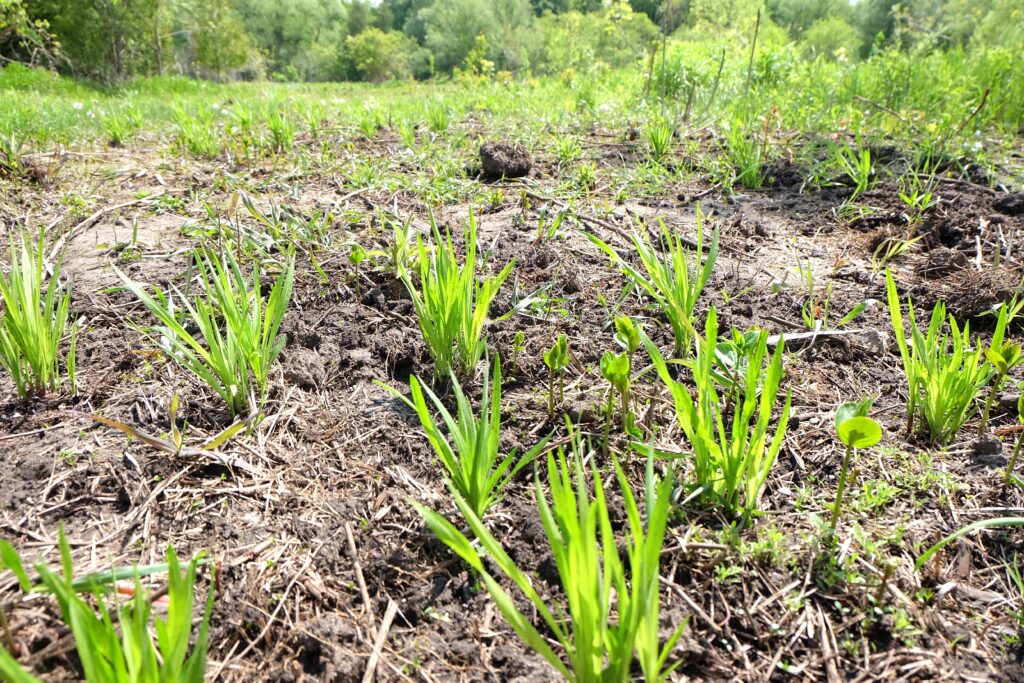
Over on the eastern edges of Toronto, Friends of the Rouge Watershed (FRW) has been dealing with invasives for decades. The community organization works to protect, restore, and regenerate the vibrant forest, stream, wetland and meadow habitats in and around Rouge National Urban Park, including a nature-based approach to minimizing and mitigating invasive plants. The best part? The FRW does this by planting and stewarding native plants — which also store carbon, provide habitats for at-risk species and help protect against flooding.
What can you learn from FRW’s work to keep unwelcome vegetation away? And what can you do to manage invasive species in your own backyard? We dig into it with Jim Robb, who has been working to protect and restore the Rouge Valley for nearly 40 years and has served as general manager of FRW since 1997.
A lot of people might be surprised to learn that invasive species are a problem in and around cities — especially ones as huge as Toronto. Can you explain why invasives love urban environments?
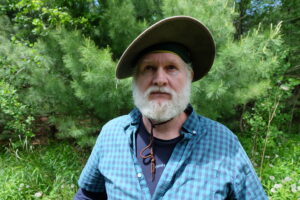
If you’re in a huge, natural area, where there are mainly native species, Mother Nature can heal most disturbed sites — and can do it better than us. But in a city, it’s different. Here in Toronto, we have invasive plants that were brought over — sometimes accidentally, sometimes by European colonizers — trees like Norway maple, Siberian elm, and Russian olive, and European buckthorn, and plants like the dog-strangling vine, garlic mustard and phragmites (also known as common reed). We also have a lot of non-native birds, like European starlings and English sparrows, that eat these non-native seeds and spread them in their droppings.
Invasives thrive in areas that have been damaged or disturbed, and there are a lot of those in and near cities. Invasive species didn’t co-evolve with the creatures and insects that live here, so they sort of get free reign. And because they have less competition, they just go nuts.
Why are these plants such a threat?
They tend to grow aggressively and outcompete native species. Take garlic mustard, for example. It gives off chemicals that are harmful to things like the trilliums, trout lilies, and other flora that grow underneath native maple forests. It’s tough to manage. Something like dog-strangling vine will grow very aggressively around native trees and plants, literally strangling their growth.
And then there are phragmites. They grow tall, and are actually quite a pretty grass — they go golden brown over the winter and have a sort of beautiful foxtail at the top. But they take over from our native cattails, which are home to Red-winged blackbirds, muskrat, beaver, and all kinds of waterfowl. Phragmites are tolerant of salt, so all along road ditches where there’s lots of salt, they can outcompete native plants. Also, phragmites send out root runners of many meters each year, and wherever they touch the ground, a new colony can start. If an excavator is working and breaks ground somewhere that has phragmite roots, and a root bit gets stuck in the excavator’s tire, and it drives somewhere else, just that little root fragment can take hold and create a colony. Thirty-five years ago, I only knew one location where there were phragmites [in our area]. Now there are probably 50,000 locations. So, phragmites have become a major problem.
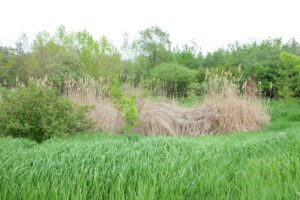
Left to their own devices, these invasive plants will spread and take over. What works to stop them?
Chemicals, like glyphosate, definitely work in killing these species, but the environmental and health risks are too great. We [at FRW] don’t use any chemicals, and hope that if anyone does, they do so very sparingly.
Removal of the invasive plants can work, too, but it takes a lot of time, resources, and dedication. To get rid of garlic mustard, you have to keep pulling it out by the roots for three years in a row, and you need hikers to stay on paths in natural areas so that they won’t introduce its seeds to other areas with their boots.
To be honest, we don’t spend a huge amount of time removing invasives. Sure, if we see an invasive growing on a site where we’re working, we’ll pull it out by the root or cut it back, depending on the plant. But in the long term, we think the best strategy to fight invasive species is by putting in more native species and expanding natural areas.
Why is that?
Invasive species thrive and spread in areas where small patches of natural habitat are fragmented by frequently disturbed areas, such as roads, rail lines, hydro corridors, urban areas, and farm fields.
When you expand a natural area by planting a lot of native species, you increase the amount of native seed in comparison to the invasive seed, and then it becomes a probability thing. It’s more likely you’re going to get a native seed land on a spot and colonize it. When you have larger natural areas, there are fewer outside edges where the non-native species can invade, and there are more core areas where native species can dominate.
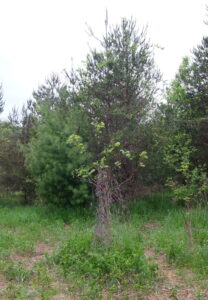
Can you give an example of how this approach has worked for you?
We carefully choose to put in native plant and tree species that are best at competing with the invasives that we want to get rid of.
We’ve had success knocking back phragmites by planting some fast growing native white pines. Phragmites are sun-demanding, so once the trees grow tall enough, the phragmites are shaded and stop growing.
This seems to take a lot of patience. How do you know it’s working?
We’ve been doing this work for more than 36 years. On the sites we’ve restored, native species are coming back in a big way, and there are fewer invasives as the sites mature and natural processes re-establish. So, I’m very optimistic that if we can continue to defragment the landscape and create larger and more interconnected natural areas, invasives will become more manageable.
How can people take on this approach at home?
You can make a difference in your own backyard, or even on your apartment balcony, by growing native plants, flowers, shrubs, and trees.
A really encouraging thing is that so many people have now set up native plant nurseries — and they’re growing not only for people in ecological protection and restoration work, like us, but for home and property owners, as well. The native plants they offer are amazing. There are just so many beautiful wildflowers available and most of them are perennials that live many years. Something like dense blazing star — you can plant that in many sunny locations in the city. Or swamp milkweed, which will grow in non-swampy land, and support monarch butterflies and bumblebees.
What advice do you have for people looking get started?
You can look up plants native to your area and start gradually. It can be as simple as removing a non-native plant and replacing it with a native one.
There are so many native species to choose from, and they are so pretty. Most of them are perennials, so they come back every year, and the initial cost is about the same as a typical non-native species, like a pansy. Even if you want to keep some of your non-native favorites, that’s okay, but if you put in more native species you’ll be better set to attract native butterflies and birds, and keep invasives away.
And you’ll get more biodiversity, and get more beauty!
FRW is one of six organizations currently supported by WWF-Canada’s Nature and Climate Grant Program, presented in partnership with Aviva Canada.
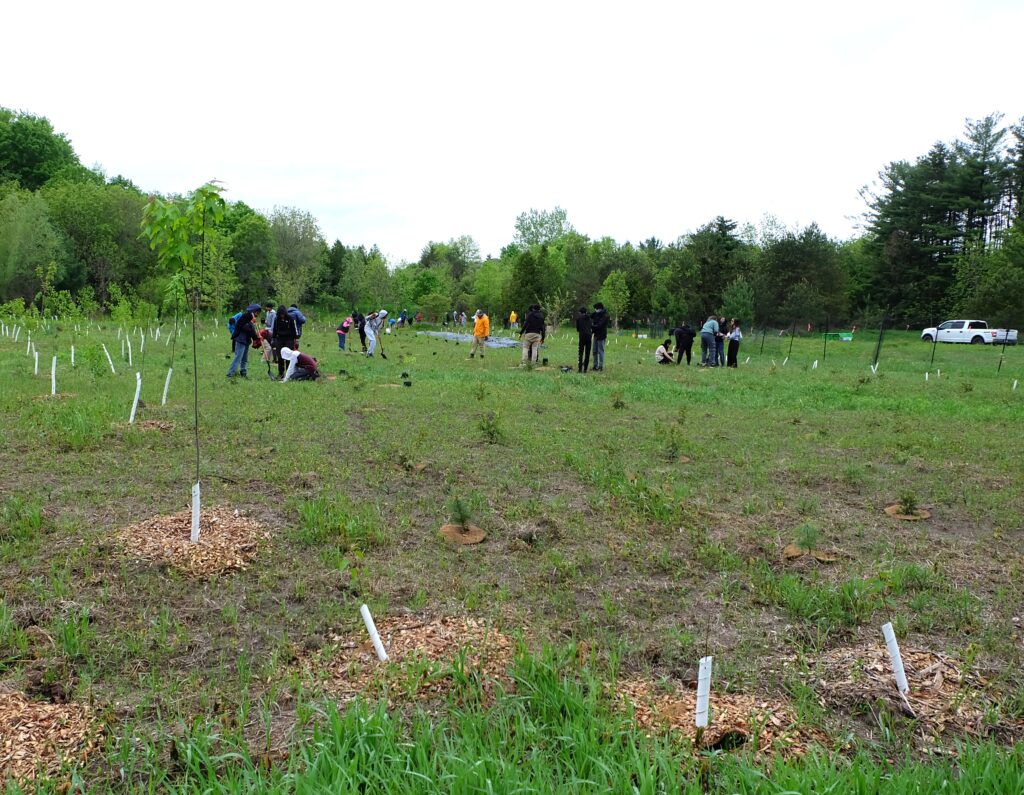
See more in our Act Locally series:
- How to de-pave your property
- How to make your yard more nature-friendly with native shrubs
- How to help nature by preventing erosion in your community
- How to help wetlands work for you

